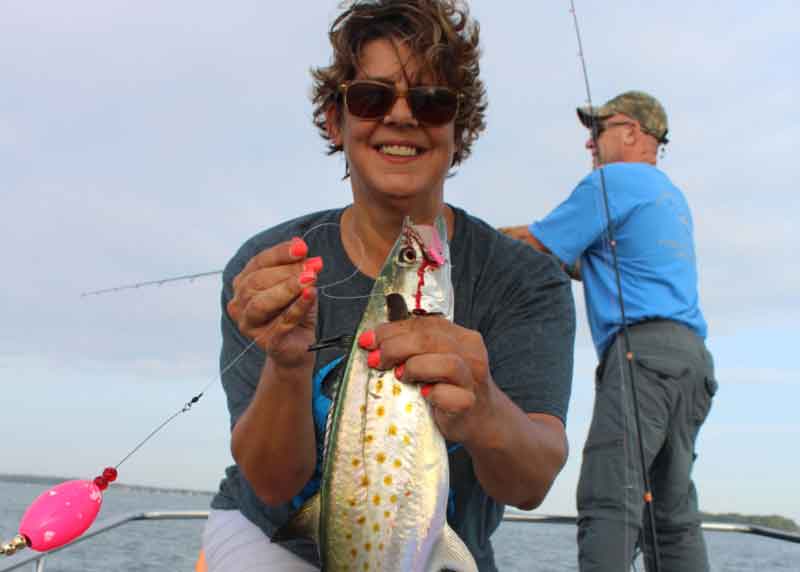Popping corks have been around for ages, and are used extensively along the Gulf Coast and Florida for species like red drum and speckled trout. But those of us who’ve tried importing popping cork fishing to the Chesapeake have found it doesn’t work nearly as well up north as it does down south. Until now.

Hard Head Custom Baits (HHCB) proprietors Mike and Julie Tomasik saw the potential for northern corking, and developed a rig and a technique that not only works, but is shockingly effective on striped bass, Spanish mackerel, and other species. The secret? It’s all in the retrieve.
The Rig – A Cajun Thunder popping cork, a two- to three-foot leader of 20-pound test, a HHCB three-quarter or half-ounce shad head, and a plastic tail (your choice of color and naturally which is best will chance with the quarry and the season, but during field testing chartreuse and pink were the killers).
The Retrieve – Here’s the real reason why their style of cork fishing works in our waters: rather than using the standard pop-and-pause technique used down south, give the cork a relatively rapid retrieve with no more than a fraction of a second’s pause between pops. Essentially, you want to work the cork constantly back to the boat more or less just like you’d walk-the-dog with a topwater lure. Sometimes a bit faster is more effective and other times a bit slower works better, but those two- and three-second pauses anglers use down south are eliminated.
The Results – The cork and its rattles create quite a surface disturbance, which draws the fish’s attention. Then the fish spots that lure, “chasing” whatever is making such a commotion. You know what happens next – BAM!
This tactic proved most effective when the fish were in shallow water of eight feet or less, and when they were up on the surface chasing bait. Naturally, it won’t be your go-to move when fish are suspended in deep water, or hunkered down on bottom. But the next time the scenario matches up, try putting a cork into it – you may be quite happy with the results.